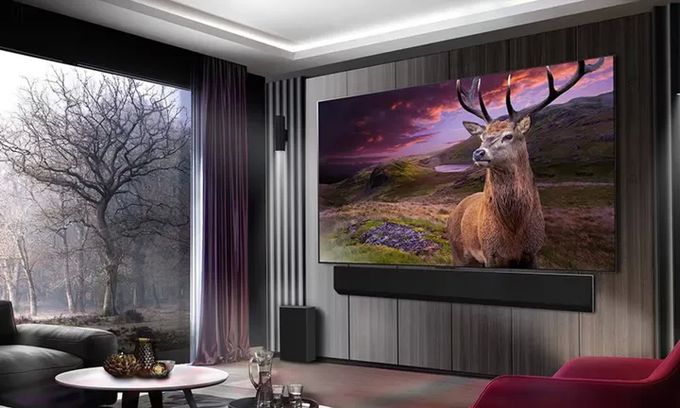Even 5-10 years ago, OLED (organic light-emitting diode) panels dominated the premium TVs segment, providing superb image quality due to ‘infinite’ contrast. This, in turn, was achieved through perfect black due to the use of self-emitting diodes that work without backlight. Unfortunately, this technology has several cons, including limited brightness and high price. In addition, their competitors have been actively improved the image quality of LED LCD panels.
QD technology and mini LED backlight
Quantum dot (QD) technology has radically improved color accuracy and brightness, and expanded the color gamut. In fact, it significantly improved the white quality by synthesizing it from blue, red and green. Its operating principle is simple and elegant. Blue from an array of blue LEDs on the rear matrix is directed onto a film with sprayed microparticles whose size corresponds to the wavelengths of green and red. Having absorbed blue, they re-emit red and green. Behind a quantum dots layer they combine with the unabsorbed blue to form high-quality white, which is used for the RGB filter.
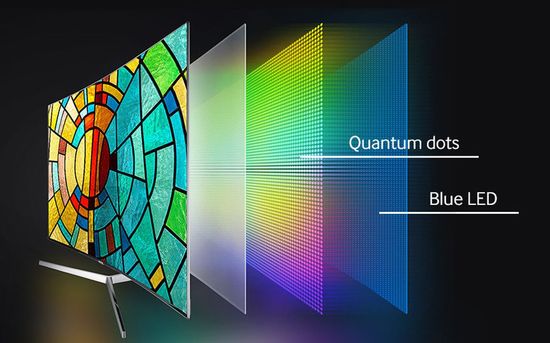
In fact, the developers have created in TV an analogue of the little sun with perfect white.
Mini LED backlight became the next evolutionary leap of LED panels. It radically improves contrast by precisely controlling local dimming depending on the content in different areas of the frame. In fact, companies have replaced traditional LEDs with miniature ones, radically increasing their number due to reduced size.
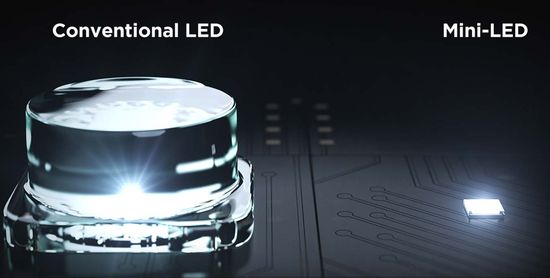
Tens of thousands of miniature LEDs have allowed developers to group them into hundreds and even thousands of local dimming zones, radically increasing the control accuracy.
Contrast Control Zones was first used in the legendary TCL 6-Series Roku TV (2018). In a few years, the company has introduced several improved generations, including OD5 – Zero (Optical Depth Zero) and mini LED Ultra version in great QM8 series. Of course, competitors are also actively developing this area. Today mini LED backlight is used in Hisense ULED, LG QNED, and in Samnsung Neo series.
In fact, the picture quality and price of TVs with QD technology and mini LED backlight are already on par with OLED panels.
MnBz crystals
Of course, the success of competitors has become a powerful incentive for manufacturers of OLED TVs. OLED Evo panel partially solved the problem of limited peak brightness, increasing it by ~ 20% up to 1,000 nits. The effect was achieved due to the second blue stack and the 3rd additional green stack between two blue emitters.
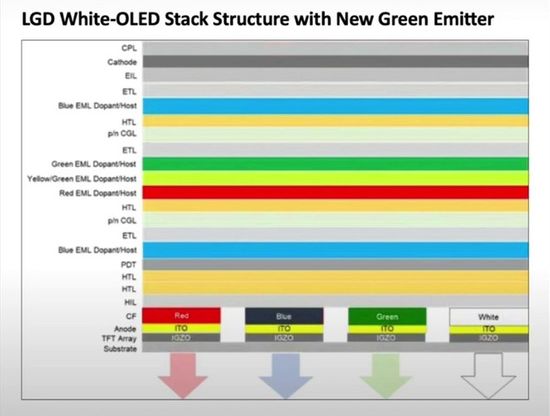
In addition, LG Display began using DuPont’s deuterium blue emitters. Replacing traditional hydrogen with the more energy-efficient deuterium provided increase in current without additional heat and without pixel degradation.
Moreover, Brightness Booster Max features in last year’s LG M3 and G3 further increased brightness by ~70% due to AI-optimizing its intensity at the pixel level.
The success of the Dongguk University research team, led by Assistant Professor Vijaya Gopalan Sree, could be the next evolutionary leap in OLED technology.
As known, modern OLED displays utilize a solution-process method that uses costly rare earth materials. Unfortunately, besides the high cost, this technology isn’t a full-proof reliable.
The research team has developed a unique process for synthesizing a non-toxic zero-dimensional Mn(II) bromide complex (MnBz). Specifically, they synthesized MnBz by combining manganese bromide (MnBr2) and benzyltriphenylphosphonium (Ph3BzPBr).
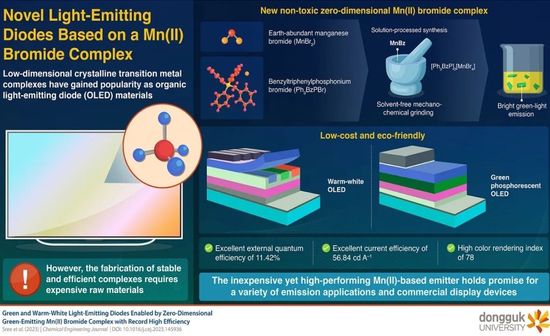
Importantly, the researchers used prolonged evaporation instead of the traditional solvents. This process produces single MnBz crystals.
They emit bright green light and provide a high quantum yield. A warm-white light-emitting device and a green phosphorescent OLED module created on their basis demonstrated superb results including:
– 56.84 cd/A (current efficiency);
– 11.42% – quantum efficiency;
– CRI ~ 78.
In fact, the Color Rendering Index (CRI) characterizes the influence of a light source on colors perception. It’s measured on a scale from 0 to 100%, characterizing color accuracy compared to ‘reference’ daylight.
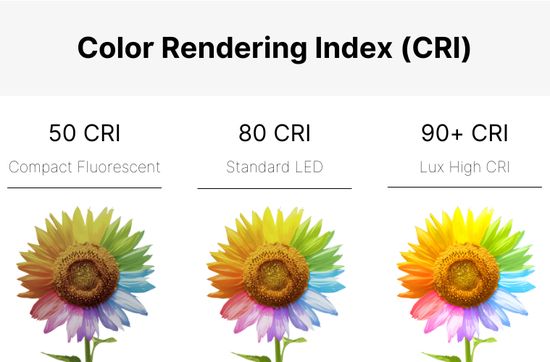
Conclusion
The successful development of MnBz crystals-based technology promises a significant reduction in the price of OLED panels while increasing their color accuracy and energy efficiency. But, of course, OLED manufacturers are unlikely to be able to relax.
Since the year before last, the list of their competitors has expanded to include models with hybrid QD-OLED panels. In 2 years, Sony and Samsung have already introduced superb Sony A95K (2022) / A95L (2023) and Samsung S95B (2022) / S95C & S90C (2023), which combined OLED-contrast with the high brightness of cheaper LCD technology. As a result, the developers managed to reduce prices while maintaining high image quality.
Moreover, the successes of ultra-short throw projector manufacturers also pose risks for TVs manufacturers. Of course, they are still inferior in brightness and contrast, but they already provide fairly high quality on a huge screen of 100″ and above, even in diffuse daylight. A partial list of new models includes:
– Epson EpiqVision Ultra UST 4K LS800 – $ 3,500;
– LG HU715Q – $ 2,500;
– Hisense PX1 Pro – $ 3,400;
– Formovie Theater – $ 3,000;
– Hisense PX2 Pro – $ 3,000;
–Hisense PL1 – $ 2,500.
Some manufacturers even call them ‘Laser TVs’. Of course, any projector with a built-in TV tuner can formally positioned as a TV with a screen outside the case, but most companies prefer the traditional name.
However, the competition is unlikely to confuse the leaders of the OLED segment, including LG and Sony.
The video demonstrates the Epson UST 4K laser projector.
